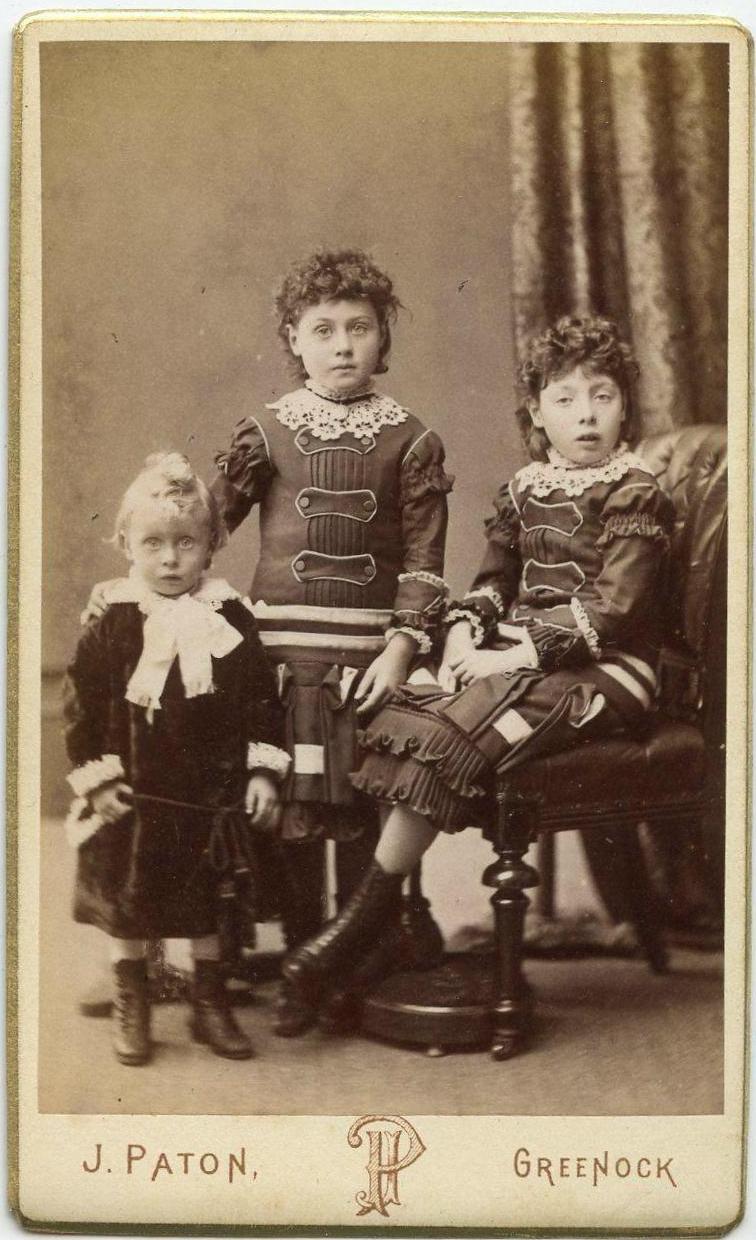
Figure 1.--This CDV of the Scottish Howie children was dated September 1883. Notice the rounded corners of the mount, the logo at the bottom. and the lack of ruling. Thre was, however, guilding at the eedges. The studio was J.Paton in Greenock. |

|
Photogrphy in Scotland as in other countries changed dramatically with the appearance of the CDV. The CDV was an albumen process which used negstives. Prints were produced on chemically treated paper. The albumen process was much less expensive and multiple copies could be purchased to send to families and friends. Suddenly we begin to see huge numbers of Scottish images for the first time as CDVs became popular (1860s). The CDV appeared earlier in Franbce, but it was not until about 1860 that we begin to see substantil numbers in Britain. This also expanded the social class mix of the photograohic record. Soon after we see the larger cabinet cards. We assume that the dates and the mounts are basically the same as in England, but there may have been some differences. Our assessment is limited by the fact tht we have so few dated Scottish photographs. As far as we can tell, CDVs continued to be dominabt in the 1870s. We begin to see substantial numbers of cabinet cards in the 1880s. We are only beginning our assessment of Scottish phototographic portaiture and eventually hope to have a more defintive assessment of albumen photography in the country. But like like England, it is clear that the CDV persisted much longer in Scotland than was the case of the United States. We see new cabinet card mount styles around the turn of the 20th century, but do not yet have the precise dates or many Scottish examples. Stereoscope cards were also mostly albumen prints, but we have not yet found Scottish examples.
Photogrphy in Scotland as in other countries changed dramatically with the appearance of the CDV. It first appeared (mid-1850s), but did not become popular for some time. The CDV appeared first in France, but it was only gradually that we begin to see substantial numbers (1860s). This occurred at about the same time in America, Britain, and France. The CDV was an albumen process which used negatives. Prints were produced on chemically treated paper. The albumen process was much less expensive than earlier formats (Dags and Ambros) and multiple copies could be purchased to send to families and friends. It was so popular that suddenly we begin to see huge numbers of Scottish images for the first time, far more than the earlier processes. This also expanded the social class mix of the photographic record making it a much more accuate indiucator of popular fashion. Most of the portraits we have found through the 1870s were CDVs. We do not know why CDVs persisted longer in Scotland and England than in America. The same was true of Europe generally. We continue to find CDV examples into the 1890s while it had largely gone out of style in many other countries. We are not yet sure about the 1900s, but suspect there were still a few. Scotland is a small country. Thus are archive enabling us to follow these trends is fairly small.
After the CDV appeared we next see the larger cabinet cards. We assume that the dates and the mounts are basically the same as in England, but there may have been some differences. Our assessment is limited by the fact tht we have so few dated Scottish photographs. We are not sure when the first cabinet card appeared. We do not yet have 1860s examples, but have found some in the 1870s. As far as we can tell, CDVs continued to be dominant in the 1870s. We begin to see substantial numbers of cabinet cards in the 1880s. We are only beginning our assessment of Scottish phototographic portaiture and eventually hope to have a more defintive assessment of albumen photography in the country. But like like England, it is clear that the CDV persisted much longer in Scotland than was the case of the United States. We see new cabinet card mount styles around the turn of the 20th century, but do not yet have the precise dates or many Scottish examples.
Stereoscope cards were also mostly albumen prints. Large numbers were made in America. We also notice large numbers of English stereoscopes. We are not sure about other countries, but we suspect they were also sone in France and Germany. We have not yet found Scottish examples, but there were Scittish stereoscopes done by foreign companies.
Navigate the Boys' Historical Clothing Web Site:
[Return to:Main Scottish photography format page]
[Return to:Main Scottish photography page]
[Return to:Main photography country page]
[Return to:Main photography page]
[Return to:Main Scottish page]
[Introduction]
[Activities]
[Biographies]
[Chronology]
[Clothing styles]
[Countries]
[Bibliographies]
[Contributions]
[FAQs]
[Glossaries]
[Images]
[Links]
[Registration]
[Tools]
[Boys' Clothing Home]
Navigate the Boys' Historical Clothing Web Site:
[Dresss]
[Sailor suits]
[Sailor hats]
[Buster Brown suits]
[Eton suits]
[Rompers]
[Tunics]
[Smocks]
[Pinafores]
